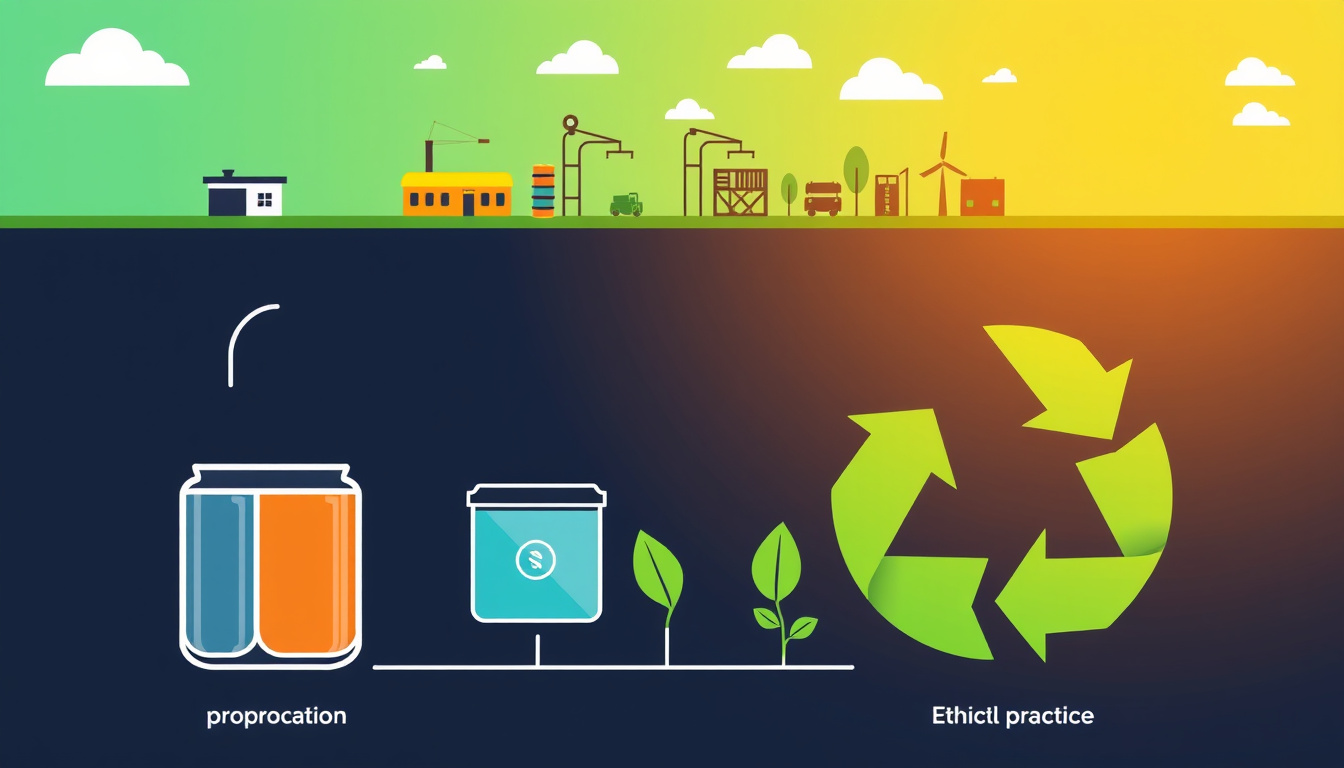In the global push toward clean energy and electrification, batteries—especially lithium-ion (Li-ion) batteries—are pivotal. As electric vehicles (EVs), renewable energy storage, and portable electronics become ubiquitous, so does the demand for batteries. However, beneath this technological revolution lies a complex, often opaque supply chain fraught with ethical, environmental, and geopolitical challenges. The increasing call for transparency in battery sourcing is reshaping how stakeholders—from manufacturers to consumers—engage with this vital industry, driving sustainable innovation and accountability.
Why Transparency in Battery Sourcing Matters
Transparency in battery sourcing refers to openly sharing detailed information about the materials that make up batteries, their geographic origins, manufacturing processes, and environmental and social impacts throughout their lifecycle—from raw material extraction to end-of-life recycling.
Bridging Environmental and Ethical Responsibility
Many critical battery materials such as lithium, cobalt, and nickel are extracted from regions where mining can lead to serious environmental degradation and human rights violations. Issues documented include:
- Child and forced labor, most notably in cobalt mining,
- Environmental harms like water depletion, soil contamination, and biodiversity loss,
- Unsafe working conditions, leading to worker injuries and deaths.
Without transparency, these issues remain hidden, allowing unethical practices to persist. Disclosures and supply chain mapping enable companies, regulators, and consumers to hold entities accountable, ensuring materials are responsibly sourced and mined with minimal environmental harm.
Enabling Efficient Circular Economy Practices
Battery composition transparency is indispensable for recycling and second-life applications. Different battery chemistries require tailored recycling processes; knowing the exact composition facilitates the efficient recovery of valuable materials, reduces waste, and lessens the dependence on virgin resource extraction.
Moreover, detailed tracking of battery components supports battery passports or digital records that document a battery’s composition and environmental footprint, assisting in extending battery lifespan through reuse and optimizing recycling technologies.
Building Consumer Trust and Regulatory Compliance
Consumers increasingly demand to know the origins and environmental impact of the products they buy. Transparent supply chains allow manufacturers to demonstrate ethical commitments, thereby boosting brand trust and consumer loyalty.
Governments worldwide are responding by introducing regulations like the European Union’s Battery Directive, enforcing strict labeling, due diligence, and recycling targets. Transparency facilitates compliance, reduces legal risks, and promotes industry-wide adoption of responsible practices.
Challenges in Achieving Transparency
Despite its importance, achieving full transparency is complex due to:
- Global and intricate supply chains: Battery materials travel thousands of miles and pass through multiple countries and actors, each with varying standards and oversight capacities.
- Lack of visibility and traceability systems: Many companies rely on tiered suppliers and subcontractors, obscuring material provenance.
- Concentration of raw materials: A few countries dominate supply, raising geopolitical risks and the potential for supply disruption.
- Rapidly evolving battery technologies: New chemistries and designs necessitate adaptable transparency and recycling frameworks.
Emerging Solutions and Best Practices

Robust Traceability Systems and Digital Technologies
Blockchain and Internet of Things (IoT) technologies provide immutable, decentralized records of material origin, movement, and processing—enhancing transparency and preventing fraud. Artificial Intelligence (AI) aids in analyzing supply chain data, identifying risks, and optimizing sourcing decisions.
Supplier Due Diligence and Certifications
Thorough evaluation of suppliers through audits and compliance assessments ensures adherence to environmental, labor, and ethical standards. Certifications such as ISO 14001 (Environmental Management) and ISO 26000 (Social Responsibility) guide companies toward best practices.
Collaboration Across Stakeholders
Public-private partnerships, NGOs, governments, and industry associations must coordinate to establish shared standards, promote knowledge exchange, and map supply chains comprehensively. Collaborative efforts reduce duplication and foster system-wide transparency improvements.
Transparency Reporting and Consumer Engagement
Regular, accessible disclosures concerning sourcing, environmental impact, and social responsibility build accountability. Companies benefit from establishing open communication channels with suppliers and consumers around sustainability goals and progress.
The Economic and Innovation Impact of Transparent Battery Sourcing
Beyond ethical and environmental benefits, increased transparency revitalizes the economy by stimulating investments and job creation in local and regional battery value chains. Policies like the U.S. Inflation Reduction Act incentivize domestic production and responsible sourcing, strengthening supply chain resilience, reducing dependency on single countries, and encouraging startups and legacy firms to innovate in battery design and recycling.
Conclusion: A Transparent Path Forward for Sustainable Technology
Transparency in battery sourcing is no longer optional—it is fundamental to the sustainable evolution of energy technologies. Illuminating every step of the battery lifecycle empowers stakeholders to tackle environmental challenges, uphold human rights, and foster a resilient and ethical battery industry. As transparency advances through technology, policy, and collaboration, it lays the groundwork for truly sustainable electrification—illuminating the future of technology and environmental stewardship alike.
——————————————————
Voltsandvolts.com is a blog dedicated to electric vehicles (EVs). Our blog features articles on EV reviews, stories, tips, tricks, charging infrastructure, and battery technology. Join the conversation and become part of the Voltsandvolts.com community today!
